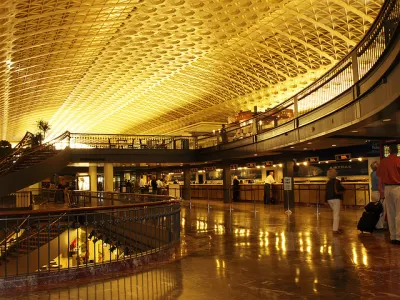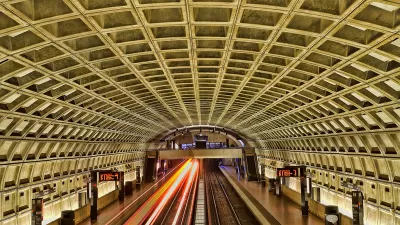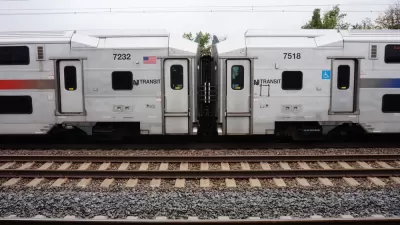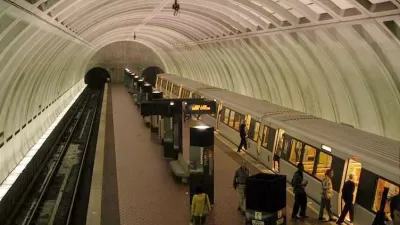Flat fares, reduced wait times, and extended late-night service are all part of a package of changes meant to bring riders back and adjust to post-pandemic travel patterns.

Washington, D.C.'s transit system is getting a major overhaul that officials hope will entice new and old users and boost ridership, reports Jake Blumgart. Because the pandemic upended the traditional workday commute, "policymakers decided to make aggressive changes to pivot away from a schedule that prioritizes traditional rush hour riders. Metro has the third largest heavy rail system in the U.S. and runs the country’s sixth largest bus system, so its policy shifts are likely to be noted by its counterparts and could be pace-setting for the larger public transport sector."
Among the sweeping changes, "[w]eekend trips will universally be priced at $2 a ride, as opposed to the usual model based on distance traveled. Transfer fees that heavily penalize lower-income riders (who don’t tend to live next to rail stops) will be eliminated. The price of bus passes will fall, while frequencies on 36 bus lines will be increased." The changes also include reduced wait times on the system's most heavily used line and extended late night service.
"In determining how to make changes, Metro policymakers studied where ridership remained strongest even during the pandemic’s worst. They saw that low-income riders and those without access to a car continued to use public transit heavily, as did many essential workers in the health-care and government fields. As vaccinations spread, and restaurants began to recover, they also saw increased demand at night from food service workers," a segment traditionally underserved by transit options.
The funding gap created by last year's plummeting ridership "is being filled by the generous operating subsidies provided by the federal government in the various rescue packages passed by Congress in 2020 and early 2021," but "Metro is planning for the end of those federal operating subsidies."
As the first major city to implement such drastic changes after the COVID-19 pandemic, D.C. could serve as "a model for other parts of the country."
FULL STORY: Big Changes Coming to D.C.’s Transit to Boost Ridership

Study: Maui’s Plan to Convert Vacation Rentals to Long-Term Housing Could Cause Nearly $1 Billion Economic Loss
The plan would reduce visitor accommodation by 25,% resulting in 1,900 jobs lost.

North Texas Transit Leaders Tout Benefits of TOD for Growing Region
At a summit focused on transit-oriented development, policymakers discussed how North Texas’ expanded light rail system can serve as a tool for economic growth.

Why Should We Subsidize Public Transportation?
Many public transit agencies face financial stress due to rising costs, declining fare revenue, and declining subsidies. Transit advocates must provide a strong business case for increasing public transit funding.

How to Make US Trains Faster
Changes to boarding platforms and a switch to electric trains could improve U.S. passenger rail service without the added cost of high-speed rail.

Columbia’s Revitalized ‘Loop’ Is a Hub for Local Entrepreneurs
A focus on small businesses is helping a commercial corridor in Columbia, Missouri thrive.

Invasive Insect Threatens Minnesota’s Ash Forests
The Emerald Ash Borer is a rapidly spreading invasive pest threatening Minnesota’s ash trees, and homeowners are encouraged to plant diverse replacement species, avoid moving ash firewood, and monitor for signs of infestation.
Urban Design for Planners 1: Software Tools
This six-course series explores essential urban design concepts using open source software and equips planners with the tools they need to participate fully in the urban design process.
Planning for Universal Design
Learn the tools for implementing Universal Design in planning regulations.
City of Santa Clarita
Ascent Environmental
Institute for Housing and Urban Development Studies (IHS)
City of Grandview
Harvard GSD Executive Education
Toledo-Lucas County Plan Commissions
Salt Lake City
NYU Wagner Graduate School of Public Service





























